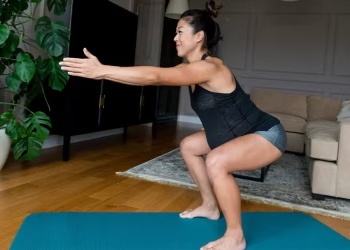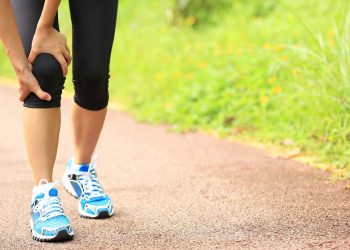In our relentless pursuit of longevity, we often overlook the most accessible and powerful tool at our disposal—one that requires no equipment, no subscription fees, and no special training. Walking, that most fundamental of human movements, has emerged from decades of scientific research as one of the most potent medicines for extending both lifespan and healthspan. While we chase exotic superfoods and expensive supplements, the answer to living longer and better has been literally beneath our feet all along.
The Science of Steps: What Research Reveals
The evidence linking walking to longevity is not merely suggestive—it’s overwhelming. A landmark 2020 study published in JAMA examined data from nearly 5,000 adults and found that those who walked approximately 8,000 steps per day had a 51% lower risk of death from all causes compared to those who walked only 4,000 steps. Even more remarkable, the benefits didn’t require marathon-level efforts. The study revealed that mortality risk continued to decline up to about 12,000 steps, after which the benefits plateaued, suggesting that more isn’t always better.
But perhaps the most encouraging finding for those just beginning their walking journey comes from a 2019 study in the British Journal of Sports Medicine. Researchers discovered that even modest increases in walking—adding just 1,000 steps to one’s daily routine—were associated with measurable reductions in mortality risk. For sedentary individuals, this finding is transformative: you don’t need to transform into an ultra-athlete overnight. Simply walking from your car to the far end of the parking lot, taking the stairs instead of the elevator, or adding a brief evening stroll can begin the process of extending your life.
The mechanisms by which walking extends life are multifaceted and profound. Regular walking improves cardiovascular health by strengthening the heart muscle, lowering blood pressure, and improving circulation. It helps regulate blood sugar levels, reducing the risk of type 2 diabetes—a condition that significantly shortens lifespan. Walking stimulates the production of beneficial neurochemicals, including brain-derived neurotrophic factor (BDNF), which supports brain health and may protect against cognitive decline and dementia.
Research has also revealed walking’s remarkable impact on inflammation, often called the “silent killer” underlying many age-related diseases. A study in Medicine & Science in Sports & Exercise found that regular moderate-intensity walking reduces systemic inflammation markers, potentially slowing the aging process at a cellular level. Additionally, weight-bearing activity like walking helps maintain bone density, reducing the risk of osteoporosis and the devastating fractures that can compromise independence in later years.
The Optimal Walking Prescription for Longevity
While any walking is better than none, research has identified certain parameters that seem to maximize longevity benefits. Understanding these optimal practices allows us to structure our walking routines for maximum impact.
Volume: The Magic Numbers
The sweet spot for longevity appears to be between 7,000 and 10,000 steps per day. This range consistently shows up in research as providing substantial mortality benefits without requiring excessive time commitment. For most people, this translates to roughly 60-90 minutes of total walking throughout the day, which doesn’t need to be completed in a single session. However, if 7,000 steps feels overwhelming, remember that any increase from your current baseline provides benefits. Start where you are, and build gradually.
Intensity: Finding Your Pace
While leisurely strolls offer benefits, research suggests that incorporating at least some moderate-intensity walking amplifies longevity effects. Moderate intensity generally means walking at a pace where you can talk but not sing—typically 3 to 4 miles per hour for most adults. A 2022 study in Nature Communications found that walking pace was independently associated with longevity, even when controlling for total volume. Brisk walkers showed notably better outcomes than slow walkers covering the same distance.
This doesn’t mean every step needs to be rushed. A practical approach involves incorporating interval-style walking: begin with a warm-up at a comfortable pace, include segments of brisker walking, and cool down at a moderate pace. Even two or three minutes of brisk walking within a longer, moderate-paced walk can enhance cardiovascular benefits.
Consistency: The Underrated Factor
Longevity benefits accrue from regular, sustained practice rather than sporadic intense efforts. Walking five days per week consistently proves more beneficial than cramming all your activity into weekend warrior sessions. This consistency helps regulate circadian rhythms, maintains metabolic health, and establishes the neurological pathways that make movement automatic rather than effortful.
Terrain and Variation
Emerging research suggests that varying your walking terrain and environment may enhance benefits. Walking on uneven surfaces, incorporating hills, or choosing routes with varied terrain engages more muscle groups and challenges balance systems that deteriorate with age. Nature walks, in particular, offer the added benefit of stress reduction and mental health improvements—factors that independently contribute to longevity.
Integrating Walking Into Modern Life: Practical Strategies
Knowledge without implementation remains merely interesting. The true challenge lies in weaving walking into the fabric of contemporary life, which seems designed to minimize movement. Here are evidence-based strategies for making walking a non-negotiable part of your longevity plan.
Reframe Walking as Essential Medicine
The first step toward consistent walking is a mindset shift. We readily schedule doctor appointments, remember to take daily medications, and invest in health insurance. Walking deserves the same priority. Schedule your walks in your calendar as you would any important appointment. When you view walking not as optional exercise but as essential preventive medicine—one that happens to be free and side-effect-free—compliance naturally increases.
Leverage Environmental Design
Our environment profoundly influences behavior. Make walking the path of least resistance by designing your environment strategically. Park at the far end of parking lots. Store your walking shoes by the door where you’ll see them. Keep a pair of comfortable walking shoes at work. Set your coffee maker in the kitchen farthest from your desk. These small environmental modifications compound over time, adding hundreds or thousands of steps without requiring additional willpower.
Anchor Walking to Existing Routines
Habit formation research shows that linking new behaviors to established routines dramatically increases success rates. This technique, called “habit stacking,” might look like: “After I pour my morning coffee, I will walk around the block,” or “After dinner, I will walk for 15 minutes before watching TV.” By anchoring walking to existing habits, you create automatic triggers that reduce the need for decision-making.
Transform Commutes and Errands
Examine your daily routine for opportunities to substitute walking for driving or sitting. Can you walk or bike to nearby errands? Could you exit public transportation one stop early? Can walking meetings replace some conference room gatherings? Many professionals discover that walking meetings not only add steps but improve creativity and problem-solving. The rhythm of walking facilitates a different quality of conversation and thinking.
Embrace Social Walking
Humans are social creatures, and leveraging this tendency enhances adherence. Establish walking dates with friends, join walking groups, or adopt a dog (dog owners walk significantly more than non-owners). The social component transforms walking from a solitary health chore into an enjoyable social activity you look forward to. Accountability to others also increases consistency—you’re less likely to skip a walk when someone is expecting you.
Use Technology Wisely
While walking requires no technology, strategic use of fitness trackers, smartphone apps, or simple pedometers can provide motivation and feedback. Seeing your daily step count, tracking progress toward goals, and receiving gentle reminders during sedentary periods can boost adherence. However, avoid becoming enslaved to metrics. The goal is sustainable behavior change, not perfect data.
Start Absurdly Small
If current activity levels are minimal, begin with walks so short they seem almost embarrassingly easy—perhaps just five minutes or around the block once. This approach, based on behavior change research, builds confidence and establishes the habit without triggering resistance. Once the habit is established, gradually extend duration and intensity. Remember: a five-minute walk is infinitely more beneficial than the 30-minute walk you planned but never took.
The Longevity Lifestyle: Walking as Foundation
Walking’s power extends beyond its direct physiological effects. It serves as a keystone habit—one positive behavior that catalyzes additional healthy choices. Regular walkers often report improved sleep quality, which itself strongly predicts longevity. They tend to make better nutritional choices, perhaps because the act of caring for their health in one domain naturally extends to others. Walking outdoors provides sunlight exposure, supporting vitamin D production and circadian rhythm regulation.
Moreover, walking offers something increasingly rare in modern life: unstructured time for reflection, creativity, and mental processing. Many of history’s greatest thinkers—from Aristotle to Einstein to Steve Jobs—were devoted walkers who credited their ambulatory habits with breakthrough insights. In an age of constant digital stimulation, walking provides a moving meditation, a chance to simply be present with your thoughts, your breath, and your surroundings.
The beauty of walking for longevity lies in its accessibility and scalability. Whether you’re 25 or 85, recovering from illness or in peak condition, living in a city or countryside, wealthy or economically challenged, walking remains available. It requires no instruction manual, asks no monthly fees, and imposes no intimidating learning curve.
Taking the First Steps
The path to longevity isn’t found in a laboratory or pharmacy—it’s found in the simple, profound act of placing one foot in front of the other, again and again, day after day. The research is unambiguous: regular walking can add years to your life and life to your years. It strengthens your heart, sharpens your mind, fortifies your bones, lifts your mood, and connects you to the world around you.
But perhaps most importantly, walking is sustainable. Unlike punishing exercise regimens that require heroic willpower, walking feels natural, even enjoyable. It doesn’t demand that you become someone different; it simply asks that you move, regularly and often, at a pace that feels right for you.
The question isn’t whether walking can extend your life—the science has settled that debate. The question is: will you take that first step today? Your future self—healthier, more energetic, and quite possibly still walking well into advanced age—is waiting for you to begin. The path to longevity starts with a single step. What better time to take it than now?
- what is tai chi walking for longevity
- comprehensive benefits for longer life
- active aging for longevity
- senior health and longevity
- wellness practices for longer life
- holistic approach to longevity
- mental health for longevity
- gentle cardio for life extension
- fitness activities for longevity
- lifelong practice for longevity






